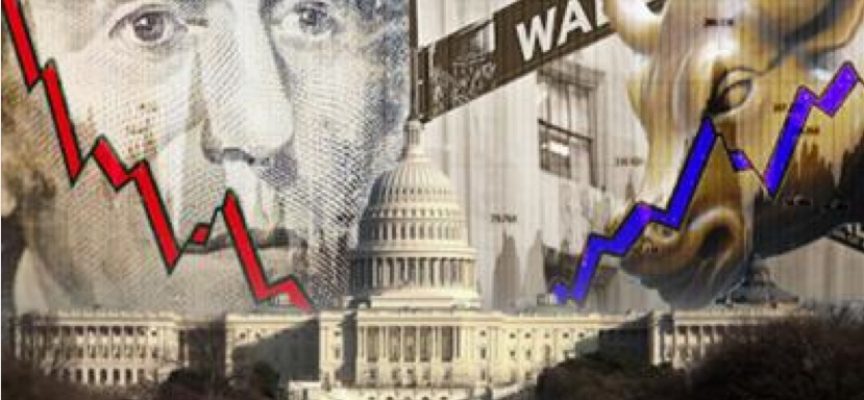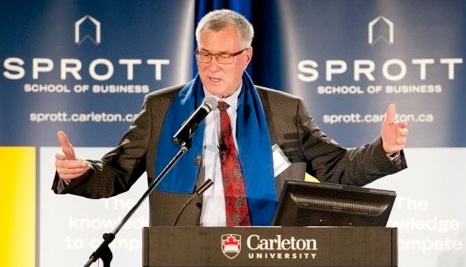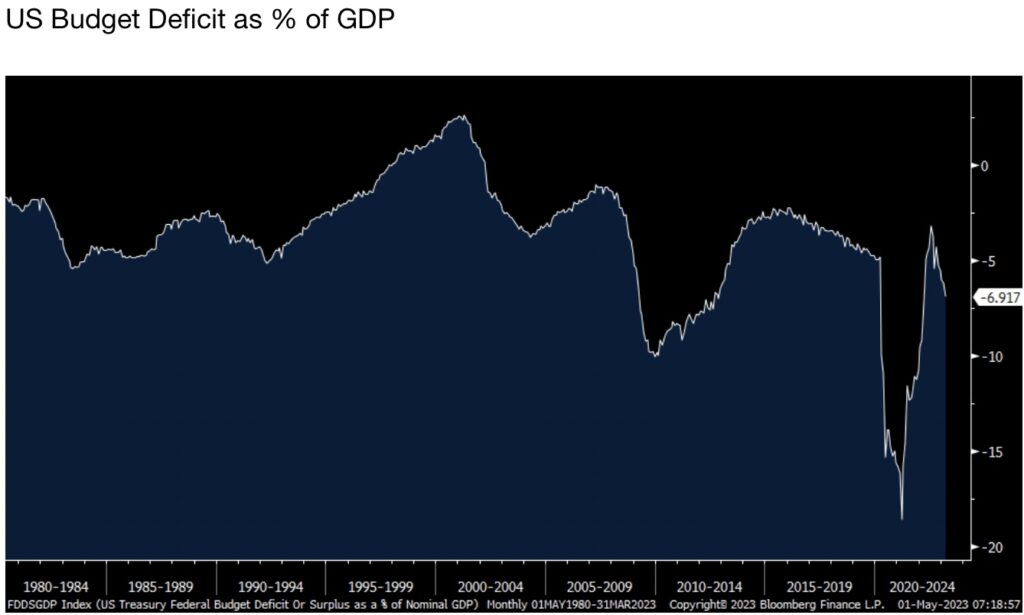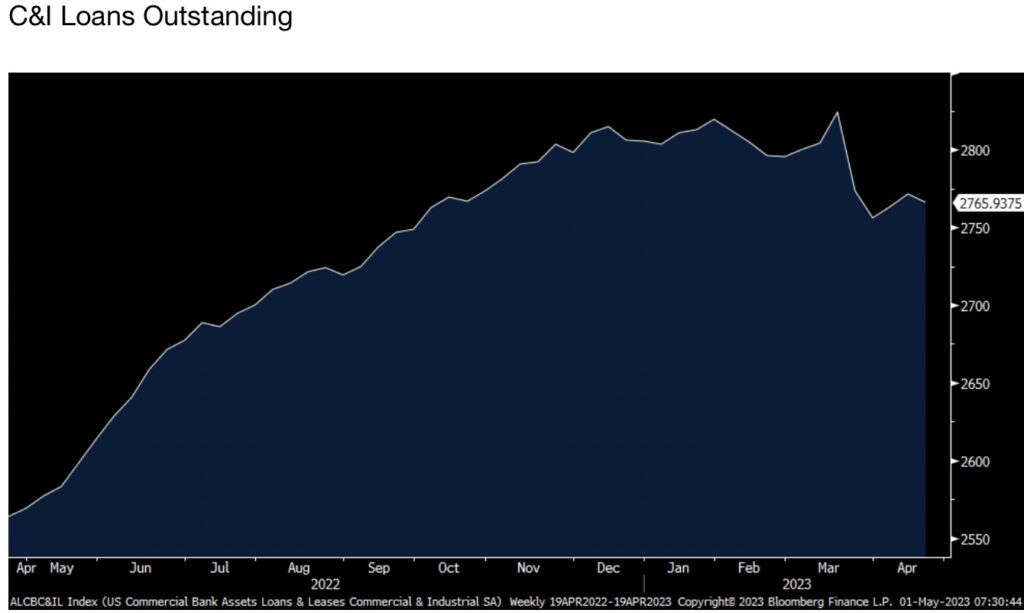With the stock market remaining at extreme bubble levels, it looks like we may be in for a long and brutal collapse.
Expect A Long Collapse
May 1 (King World News) – Simon Mikhailovich: The word “collapse” evokes a sudden apocalyptic event but that’s not how it usually happens.
The Great Depression was an era, not an event, and the same was true for the Soviet collapse – it unfolded over a decade.
History and common sense suggest that bailouts will continue until confidence in governments & their scrip fails.
Most people, even those who realize that status quo is unsustainable, believe that it will persist until “a remote breaking point.”
And if history is a guide, this feeling of remoteness will persist until the very end…
This Company Has A Massive High-Grade Gold Project In Canada And Billionaire Eric Sprott Has A Huge Position! To Learn Which Company Click Here Or On The Image Below.
Watch The Tape Closely
Art Cashin, Head of Floor Operations at UBS: The S&P clearly punches above the 4155/4165 resistance, which it had breached somewhat on Friday. Yet, the new push-through is followed by no rush of short-covering or the fear that the train was leaving the station. That raises questions as to whether we can begin to call it a breakout and rule out a topping process. I think that is not quite available yet.
The technicals remain somewhat frustrating. With much of the financial world closed for May Day, as you would expect, the volume is not riveting. So, we will do as they say at the racetrack – – Hold all tickets. The race is not yet official.
Traders guess it is just new money for the new month, carrying the day for the bulls. The February high was around 4179/4180. So, that level will be carefully watched.
The afternoon action will be interesting, and we will see if the bulls can add on to this morning’s strength.
Other than that, no economic news is due. The media still seems to be all filled up with comments about the First Republic situation.
Let’s see what they can do this afternoon. In the meantime, stay safe.
Arthur
Fed Balance Sheet
Peter Boockvar: Since rising by $393b in the post SVB bank bond duration bailouts, the Fed’s balance sheet for the week ended April 26th has now shrunk by $171b and will continue to as QT is essentially back on (though I never viewed the expansion in those weeks after SVB as QE). The Fed will rely on this tightening as they stop with the rate hikes of the fed funds after Wednesday, most likely. And this is the balancing act that Jay Powell will dance around Wednesday as he won’t want a Fed pause to imply as being on the cusp of rate cuts as the fed funds futures are pricing in. This act in addition to Powell explaining his belief of the prudence of raising again this week, rather than calling a time out (where the game isn’t over) in the face of the credit contraction that we are in the midst of.
I’ll argue again that just by leaving the fed funds rate at the current level for a longer period of time is itself a continued form of monetary policy because of all the debt that is repricing much higher on a monthly basis…
ALERT:
Legendary investors are buying share of a company very few people know about. To find out which company CLICK HERE OR ON THE IMAGE BELOW.
 Sponsored
Sponsored
Real Estate
With the obvious challenges that office real estate now faces and also for anyone owning commercial real estate of any kind that has debt coming due this year, it’s important to not paint a broad brush to the entire industry. This is also the case with banks that have exposure to CRE, where 2/3 has been issued by small and medium sized banks. Location, quality and balance sheet will separate the survivors from the distressed and soon to be, which there will be plenty more for sure.
To this point, a stock we own is Cousins Properties, an office owner in sunbelt states like Atlanta, Austin, Dallas, Tampa, Charlotte, Nashville and Phoenix, and had some comments in their earnings call last week that makes this point. In addition to highlighting the attractive markets they are in, “Our customers are returning in greater force, accelerated obsolescence is reducing the competition, new development is minimal, and demand remains firmly focused on the best properties in the best sub-markets. In addition, customers are increasingly focused on identifying properties with sound capital structures that can fund leasing costs. We call this flight to capital. The market is rebalancing. Premier properties will fill up in time, while undesirable properties are emptying. The office is not dead, rather obsolete office is dead.” I bolded the last comment.
And I’ve been hearing more stories that it is the tenants of CRE generally that are doing the due diligence on the landlords now before signing leases rather than only the other way around. To put numbers here, the size of the CRE market is about $20 trillion and about $19 trillion of that are private with the public REITS only about $1 trillion. I believe many of the public reits have better balance sheets and access to capital than private and thus it is the former that will be much more challenged, which as stated is the majority of the market.
On this point about due diligence, this is what Healthpeak Properties, an owner of medical office buildings and life science properties, another stock we own, said in their call last week:
“much like landlords analyze tenant credits, tenants are now doing the same with landlords. With record demand and minimal availability in recent years, tenants didn’t always have the luxury of thoughtfully selecting their real estate assets or partners of choice, and many had to settle with what was available. Today, tenants have more ability to select a landlord that has the financial capability and operating capability in the market, as well as one that has the ability to provide pathways to growth within its portfolio.”
This is another plus for the public reits relative to private.
I also want to expand on apartment rents with it being the biggest component of CPI and 2nd biggest in PCE. I highlight each month the Apartment List national report but I want to emphasize again that it ONLY reflects NEW lease trends. I saw this because too many take this report and run with it when comparing to the BLS rental component of CPI. New leases only make up about half the rental leases with the rest being renewals. Renewal rate increases are now running well above the pace of new lease increases after the reverse was the case in the prior years…
ALERT:
Billionaire mining legend Pierre Lassonde has been buying large blocks of shares in this gold exploration company and believes the stock is set to soar more than 150% in the next 6 months. To find out which company CLICK HERE OR ON THE IMAGE BELOW.
 Sponsored
Sponsored
Here are stats from 3 multi family REITS that reported last week, Camden Property Trust (a major landlord in sunbelt states), Equity Residential (a major landlord on the coasts) and Elme Communities (a smaller landlord of both A and B quality apartments mostly in the DC metro area and stock we own).
Camden Property:
New lease growth up 1.8%, renewals up 6.7%. Their blended rate is 4%. They said “Renewal offers from May and June were sent out in the mid 6% range. While these growth rates were down from the record levels seen in the first four months of 2022, our 2023 ytd performance is actually stronger than what we would historically expect to achieve during the first four months of the year.”
Equity Residential:
Their blended rate is 3.5-4%. Their renewals are about 55-60% of all leases. “Going forward we’re achieving somewhere in this 5.5-6% achieved renewal rate increase each month. We don’t see a significant change there.” They did also say that this could slow to 4-5% by the end of the year.
Elme Communities:
New lease growth .7%, renewal growth up 8%. “We have signed renewal offers for April and May lease expirations with effective rate increases of between 6-7% on average. We expect renewal rates to average in the mid single digits through the summer months, followed by the low single digits by the end of the year.”
Rent Growth Slowing But Expect Continued Service Inflation
Bottom line, rent growth is for sure slowing on a blended basis but I just wanted to point out the differences between the two lease components and not assume the Apartment List data captures the entire market. With a lot of new supply coming we also assume that rent growth continues to slow but at some point there will be no new supply when these projects are complete while I still see steady demand for rentals. Service inflation will remain ALWAYS persistent.
US Budget Deficit
With the debt ceiling debate, I want to include a chart of the US budget deficit as a percent of GDP to provide context in which its coming. For the last 12 months it now stands at 6.9% thru 3/31. Since the recession in the early 1980’s it usually bottomed at 5% at the depths of a recession. At the abyss of the 2008 recession saw it get as wide as 10% and I won’t bother with the anomaly of Covid. In other words, we’re not even technically in a recession, but headed towards one, and the deficit is already at 7%.
In the Fed bank data seen on Friday for the week ended 4/19, C&I loans outstanding shrunk by $5.3b. It’s now down about $58b since the aftermath of SVB and just above the lowest since last September.
ALSO JUST RELEASED: Greyerz – The Everything Bubble Is Now Turning Into The Everything Collapse CLICK HERE.
***To listen to Alasdair Macleod discuss the key for the next major move in the gold market CLICK HERE OR ON THE IMAGE BELOW.
© 2023 by King World News®. All Rights Reserved. This material may not be published, broadcast, rewritten, or redistributed. However, linking directly to the articles is permitted and encouraged.











